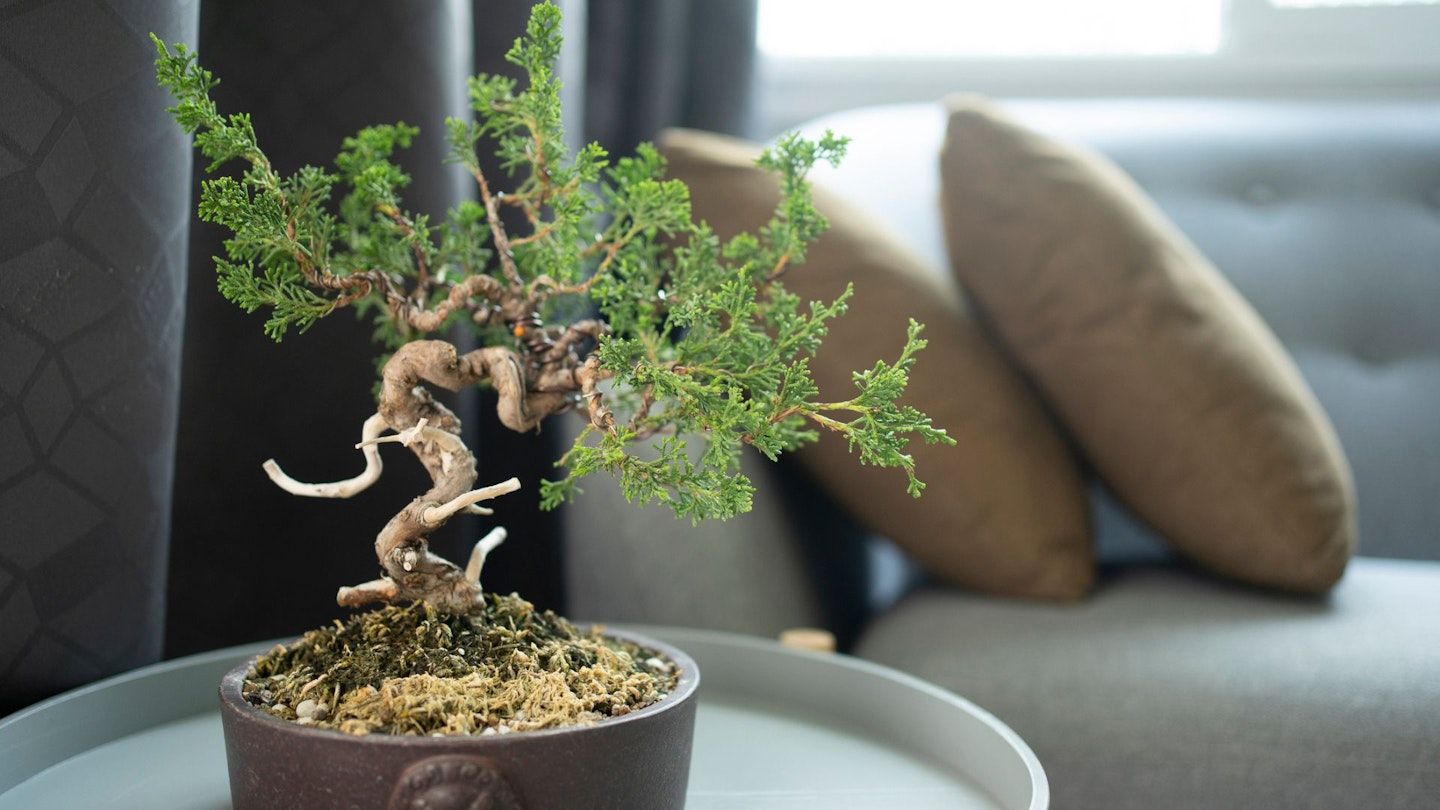You may have garnered quite a collection of indoor houseplants, but if you’re looking for something a little different, we'd recommend investing in the best bonsai plants. It’s a traditional art of growing and maintaining miniature trees in containers, popular in East Asia. Bonsai trees can add beauty to any space, spreading joy in the office or kitchen. Respected in the ancient art of Feng Shui, also, we’re here to find you the best bonsai plants for your home.
From an aesthetical perspective, there are plenty of advantages to cultivating a bonsai plant at home. As with any houseplant, it adds charming greenery to your space – and with bonsai, the sight is simply exquisite. Bonsai is one of many spiritually-revered plants primed for wellbeing, offering tranquillity and productivity, as it has stress-relieving qualities.
Best bonsai plants at a glance:
• Best for ornamental style: Chinese Elm Bonsai with Ceramic Tray - view on Etsy
• Best flowering bonsai plant: Bonsai Ligustrum - view on Thompson & Morgan
• Great for beginners: Brush Cherry Bonsai (Syzygium) - view on Oxy Plants
If you’re considering introducing a bonsai into your home, please be aware of the issues that can be caused by nasty intruders, such as pesky insects and black mould from spores. Our advice is not to keep your bonsai too moist to keep the mould away – ensure good maintenance.
Bonsai plant care is slightly different to that of a regular houseplant. As they are planted in small pots, bonsai generally have limited storage for nutrients and water. Plus, if you’re investing in a tropical indoor bonsai, make sure to remember that this little tree will likely be accustomed to receiving a lot of light and high humidity, which can be tricky to replicate indoors. Need a guide to the best bonsai plant care and maintenance? Scroll down to our FAQs for more information.
Best bonsai plants
Best cat-friendly bonsai plant
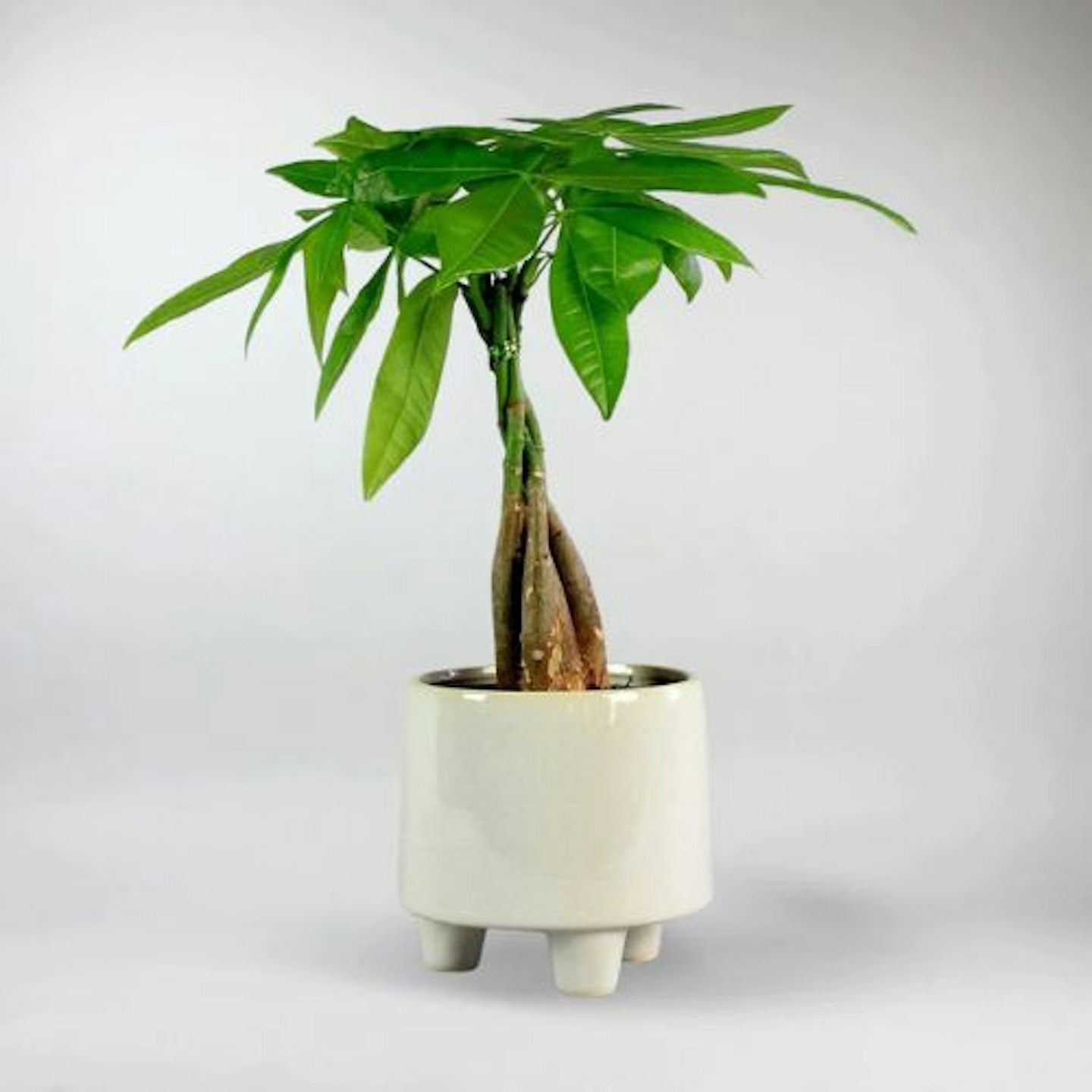
bloomboxclub.com
First, we have the non-toxic and pet-friendly Pachira Aquatica. Also known as the Money Tree, this bonsai is effortlessly low-maintenance and will brighten up any room. Air-purifying and perfect for bedrooms, this plant is associated with good fortune and prosperity. Perfect for beginners, it's quite a common wedding present in East Asia.
Customer review: "The Money Tree is lovely - and it's pet-friendly, too."
Pros
- Easy care and maintenance
- Non-toxic and pet-friendly
- Air-purifying, bedroom-friendly
Cons
- Only smaller size is in stock
Best for lush green in the home
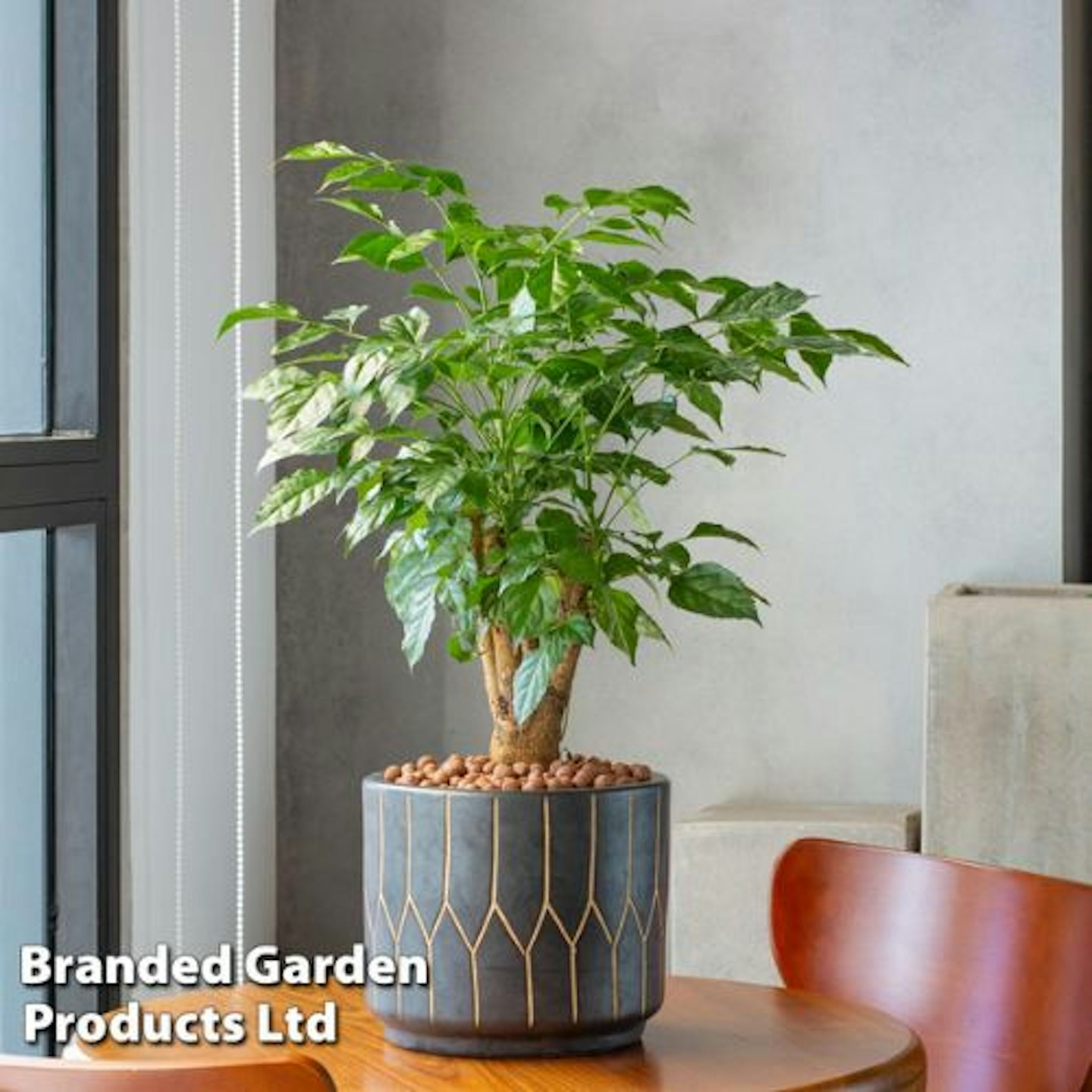
www.thompson-morgan.com
This bonsai version of the huge Radermachera tree is composed of shiny, bright and green leaflets. Here, you can recreate your own miniature, indoor rainforest. It's definitely on-trend. Another good choice for beginners, the Radermacha tolerates dry climes and can be shaped as you wish. Get the pruning shears out.
Pros
- Lush green; crinkly leaves
- Can be sculpted and shaped
- Easy to look after
Cons
- No customer reviews
- May grow too large for some
Best tall-growing bonsai plant
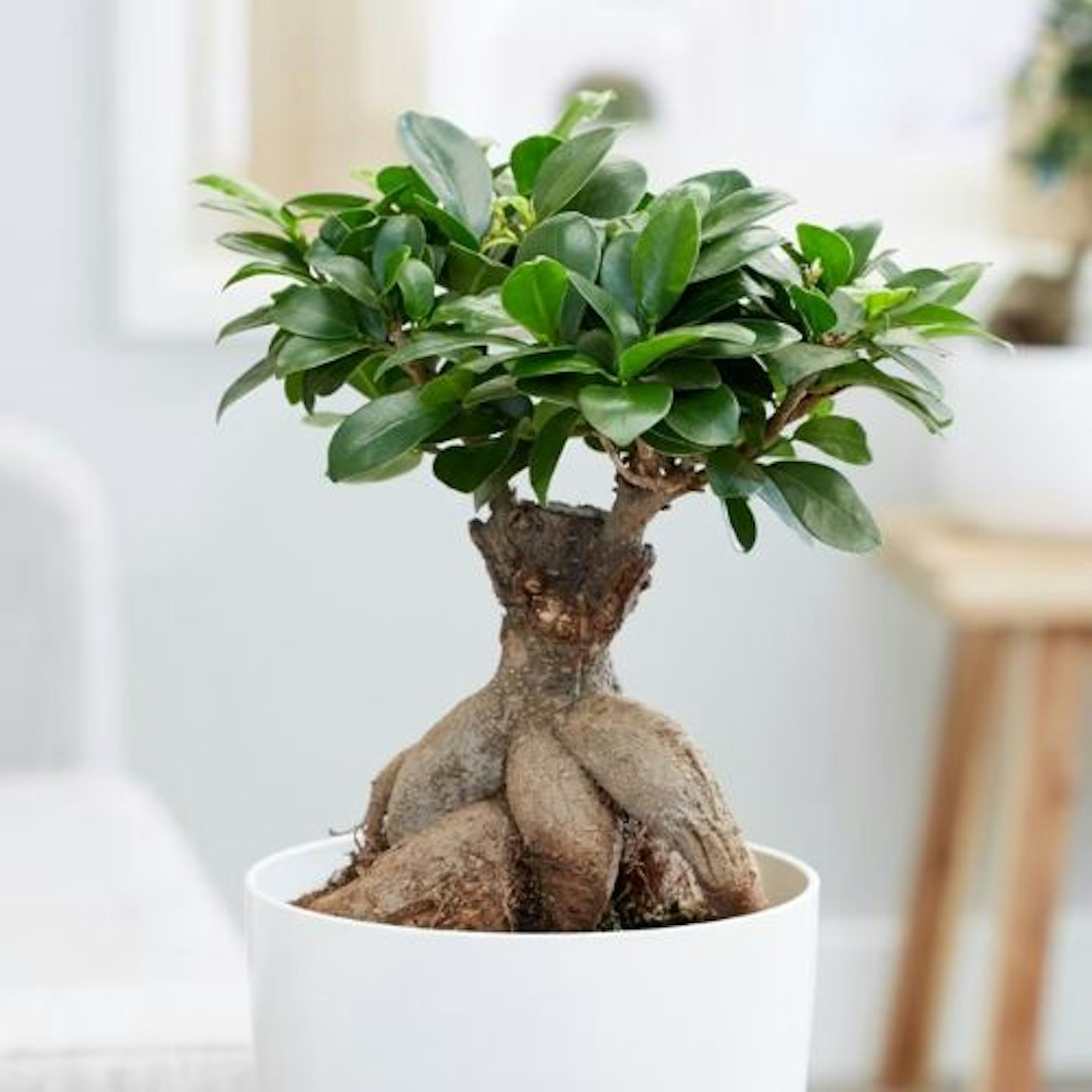
www.crocus.co.uk
An indoor plant, this extraordinary plant will be a talking point for guests. Popular for beginners, this variety has swollen roots and is unusually beautiful. On top, you are treated to a mass of glossy, deep green oval leaves. Captivating, this bonsai will tolerate lower light levels, growing fast and tall. However, this plant is toxic for your furry friends and requires a constant temperature indoors to thrive. Grab a pot in your order from Crocus.
Customer review: "This is my first bonsai tree and it looks fantastic on my desk. Very happy with the purchase."
Pros
- Easy maintenance
- Grows tall quickly
- Tolerates lower light
Cons
- Indoor bonsai only
- Pot not included
Best for ornamental style
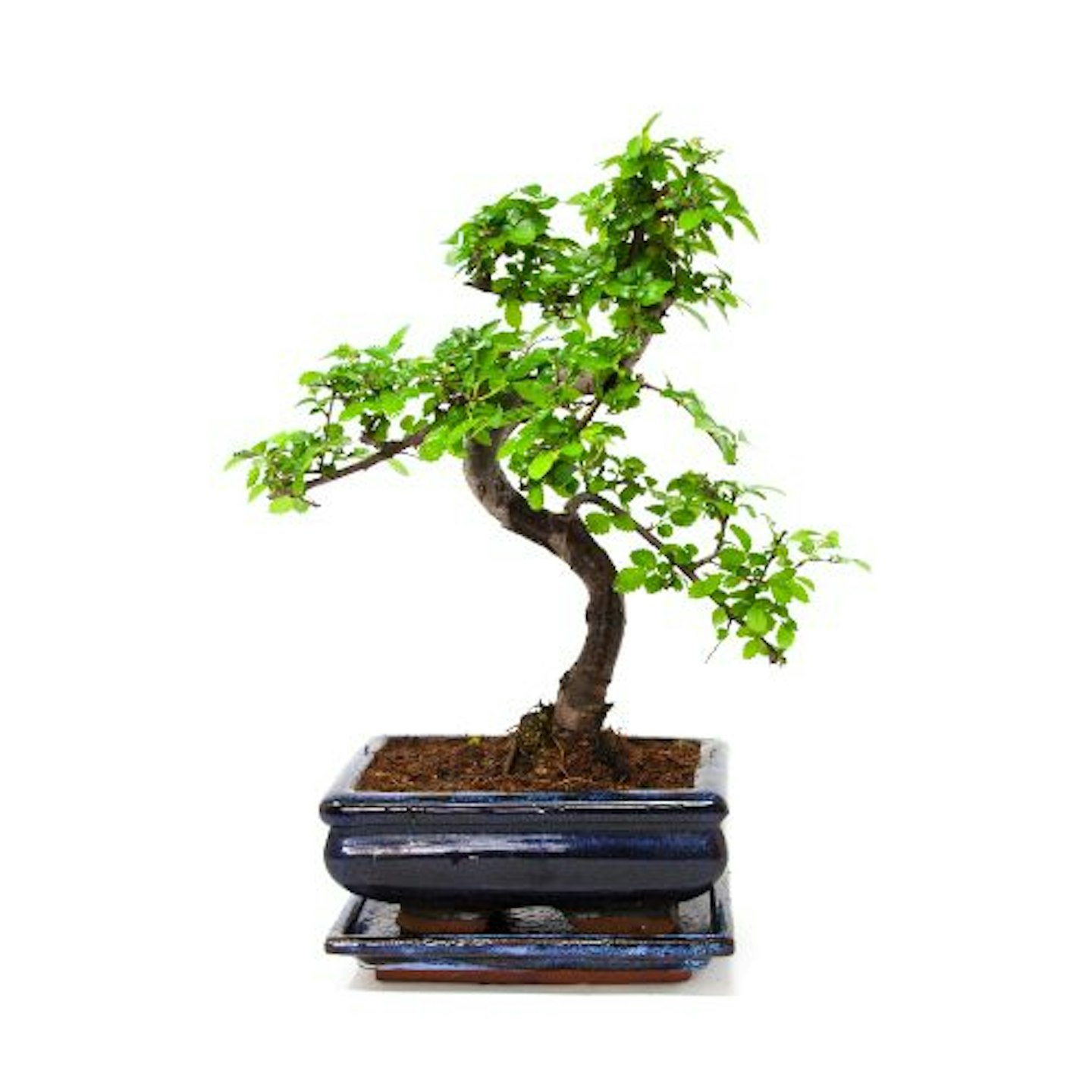
www.etsy.com
This shaped, Chinese Elm Bonsai is an excellent semi-evergreen bonsai and can even be placed outdoors during the summer months. But, it does need some indoor winter protection. In this Etsy listing, the bonsai comes in a ceramic bonsai pot and matching dry tray. Result. Though not pet friendly, this tree is easy to care for and arrives safely.
Customer review: "I bought this for a friend and she absolutely loves it. Delivery was on time, it was really securely packaged without being wasteful (eco-wise). The wee tree arrived in perfect condition, soil still moist and I managed to not kill it whilst it was just my care for two days - delighted."
Pros
- Comes with a ceramic tray
- Medium maintenance
- Arrives safe and well
Cons
- Not pet friendly
Best for the conservatory

www.thompson-morgan.com
More suited to experience bonsai owners, we like this Bonsai Carmona from Thompson & Morgan. Also known as the 'Fukien Tea Tree', this plant has small, glossy leaves and a trunk that becomes gnarled with maturity. At any time throughout the year, some white blooms may appear with red berries, too. It thrives in warm conditions, so you can place the plant outdoors when the temperature is around 20°C and keep it warm indoors during the winter months.
Customer review: "Bought as a birthday present for a delighted recipient. Plant arrived beautifully packaged and looking very healthy."
Pros
- Different sizes available
- Fabulous summer patio feature
- Half-hardy, indoors and outdoors
Cons
- Not pet friendly
- Needs to be warm
Best flowering bonsai plant
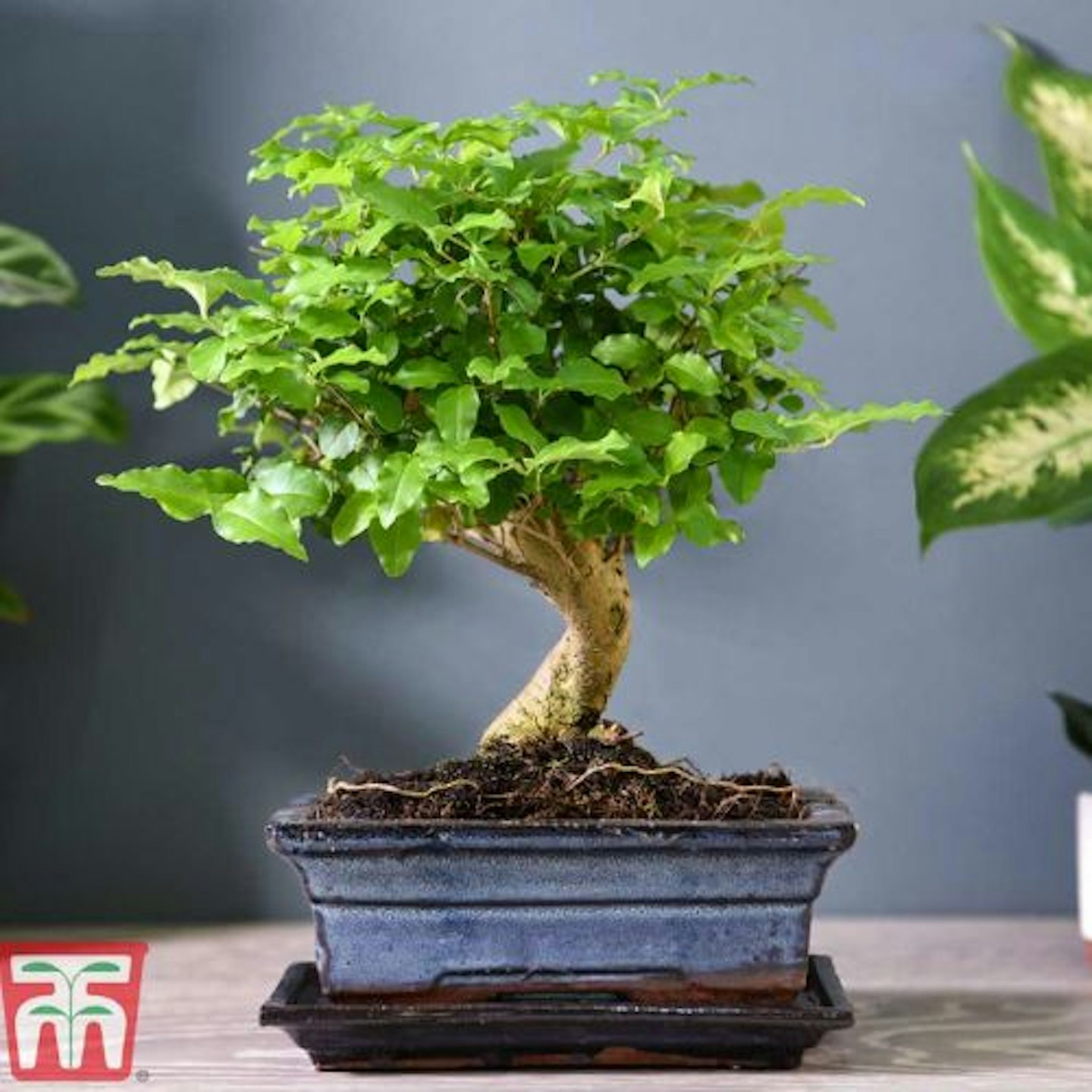
www.thompson-morgan.com
Ligustrum makes a good choice for beginners, being easy to train into an attractive evergreen bonsai. Better known as Privet, these hardy trees are undemanding and respond well to pruning. Easy. They have small, dark green leaves which contrast the grey trunk. This bonsai may not be pet friendly but it produces white flowers in the spring and berries in the autumn.
Customer review: "Lovely quality, very healthy and happy bonsai."
Pros
- White flowers in spring
- Autumn berries
- Good for beginners
Cons
- Not pet-friendly
Best for colourful foliage
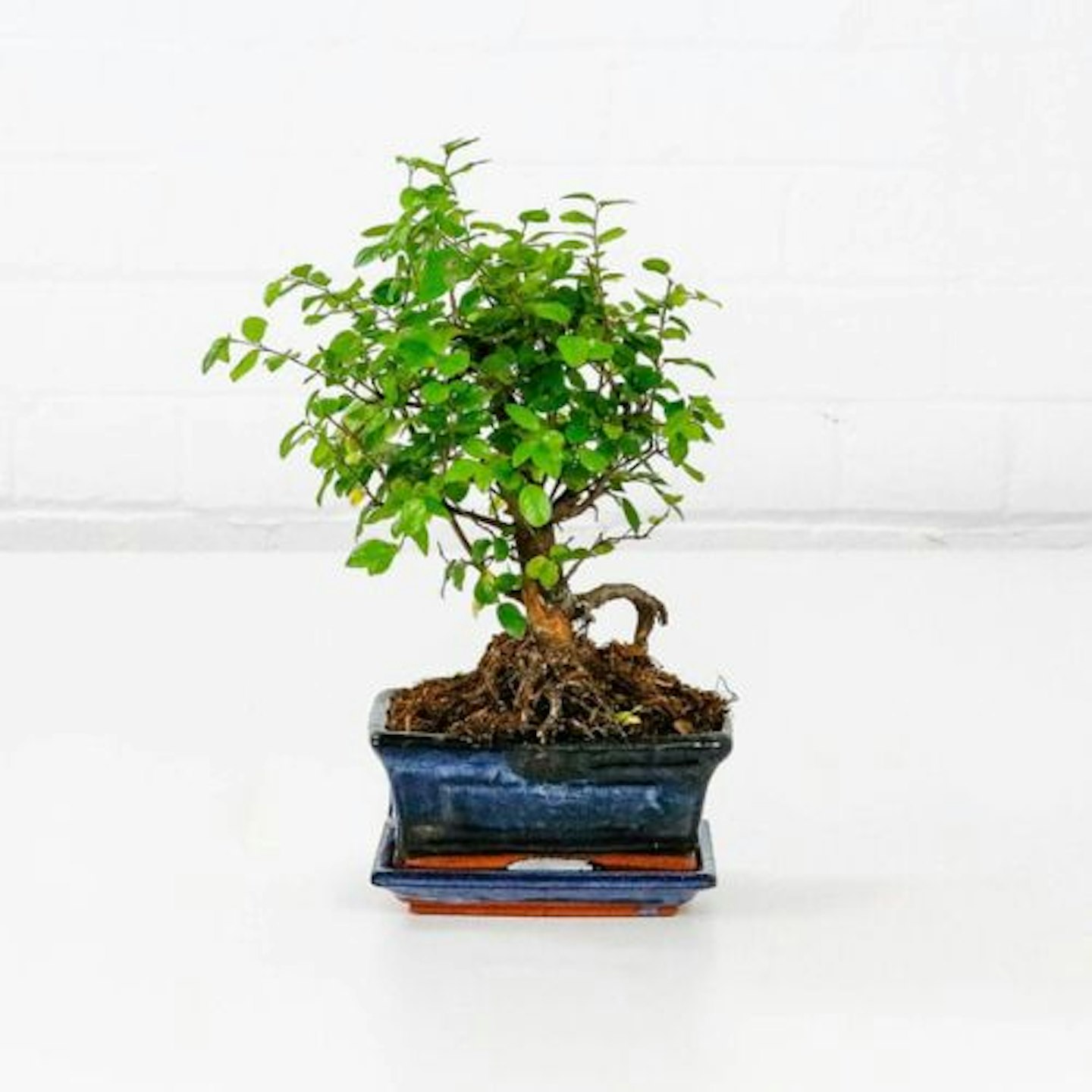
oxy-plants.com
We love this one. It's a Chinese Sweet Plum - a beautiful indoor bonsai tree that adds great character to any room. Oxy supplies this bonsai with a beautiful glazed ceramic pot and with a matching drip tray, enabling excess water to drain safely without damaging your windowsill, table, or carpet! This all-in-one plant makes the perfect gift or treat.
Customer review: "Excellent communication, rapid delivery and well packaged. Plants seem very good quality and reasonable price."
Pros
- Comes with a pot and tray
- Adds great character
- Red and green foliage
Cons
- Not pet friendly
Great for beginners
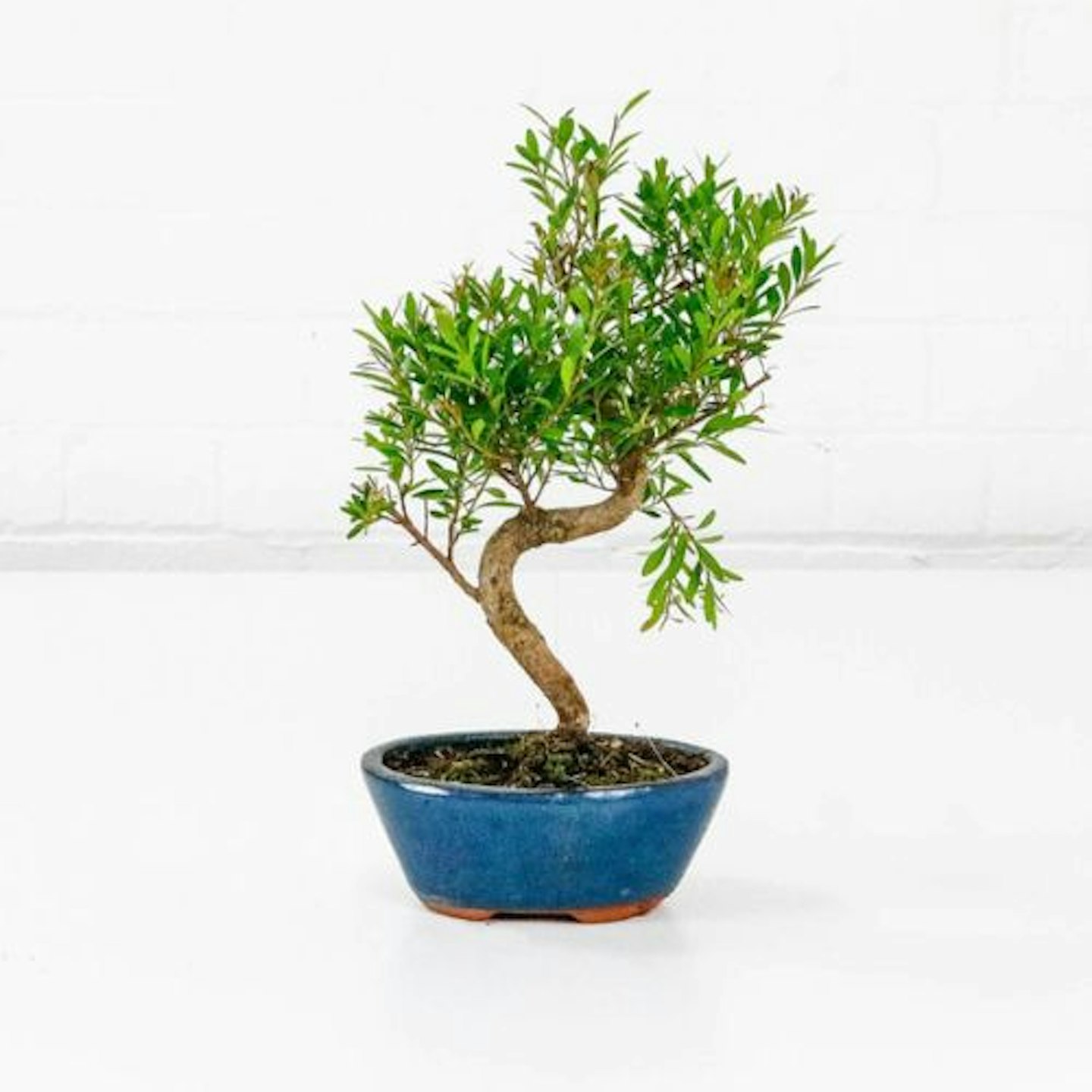
oxy-plants.com
Coming with a ceramic-glazed pot and tray, the Brush Cherry Bonsai is a beautiful addition to our list. It adds elegance to any space. It's an evergreen tree or shrub with dark green glossy lance-shaped leaves, bearing small white flowers and edible red fruit. Plus, it takes styling well so break out the pruning shears. Though it's not pet safe, it's a treat.
Customer review: "Lovely healthy plant, packaged really well so protected whilst in transit. Very happy with the price, service and delivery. I will be ordering more plants from here in the future."
Pros
- Comes with a pot and tray
- Flowers and fruit
- Wide-reaching foliage
Cons
- Not pet friendly
Best bonsai plants FAQs
Are bonsai plants safe for cats?
As cats are known to brush up against almost anything or to use it as a scratching post, finding the right houseplant is vital. After all, some houseplants (such as cheese plants and aloe vera) are not cat friendly, says feline-focused charity, Cats Protection.
Similarly, with bonsai, there are some species that don’t agree with our feline friends. According to Cats Protection, the dwarf jade, the Hawaiian umbrella and ficus bonsai may not be the best choice as they’re listed under 'caution advised'. They’re not listed as toxic, but they’re not completely cat-friendly. However, species such as the MoneyTree is fine for your kitty.
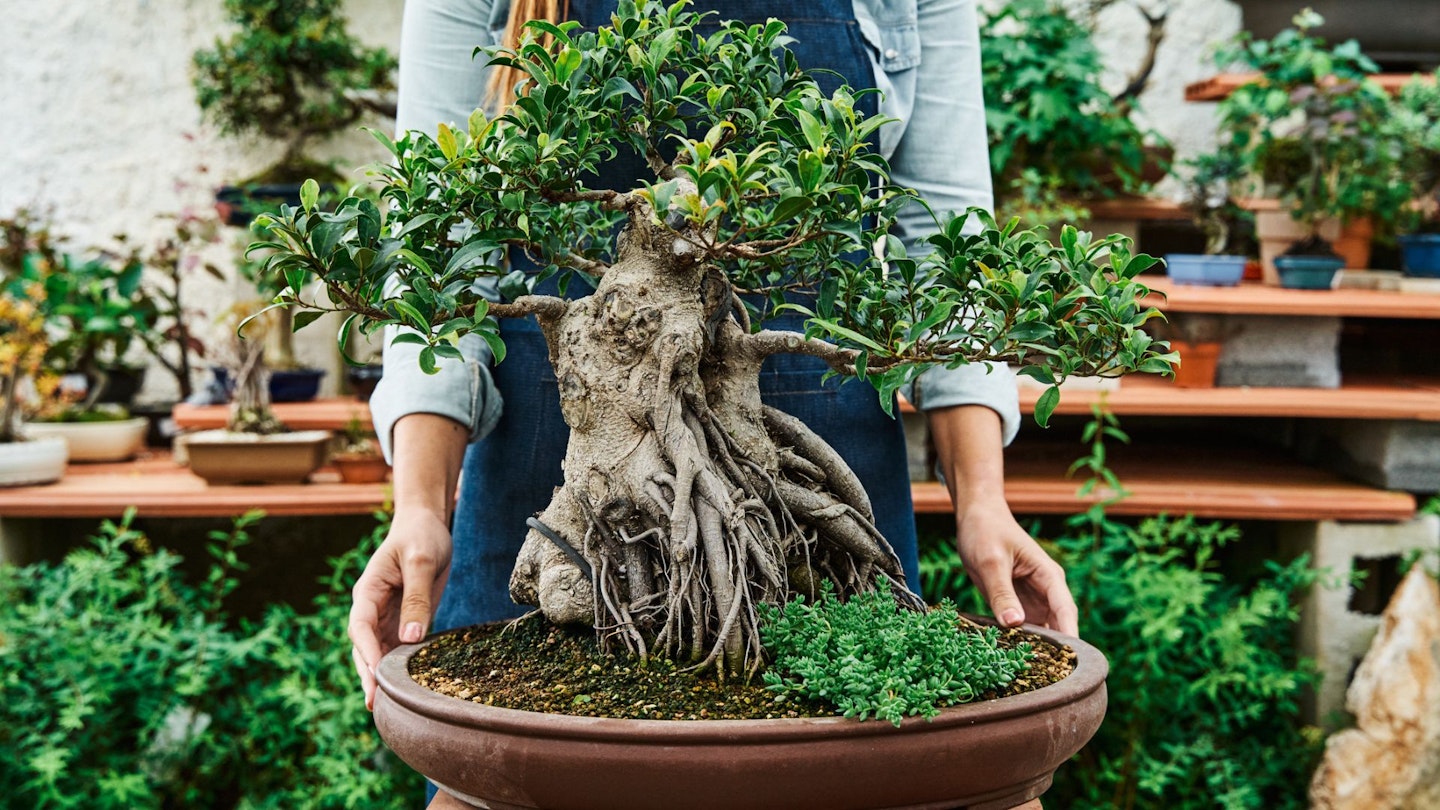
Should bonsai be indoors or outdoors?
Keeping bonsai trees just indoors is a common misconception, says Bonsai Empire. They add that “most bonsai should be placed outdoors, where they are exposed to the four natural seasons just like normal trees are.” Therefore, only tropical (or sub-tropical) bonsai can survive indoors where temperatures are typically higher year-round and a little more stable.
Luckily, there are several tropical and subtropical trees that you can grow indoors as they don’t need a level of dormancy that other bonsai require. Dormancy essentially means that the yearly growth cycle has ended and the tree “prepares for the next cycle which will start again in spring.” These include the ficus bonsai, which is a notoriously easy-to-care-for houseplant as it is “tolerant of low humidity and is very resilient, making it an excellent choice for beginners,” says Bonsai Empire.
Other popular indoor bonsai include the dwarf jade, the Fukien tea, the Hawaiian umbrella (schefflera), and the sweet plum. Take your pick from the bunch and all will thrive indoors if you care for them properly. More on that below…
How do I take care of a bonsai plant?
As mentioned earlier, bonsai are accustomed to tropical climes, which involve high humidity and decent light. Thanks to Bonsai Empire, we have a guide on how to care for indoor bonsai plants. After all, you need to take into account the specific care guidelines for indoor trees for your new houseplant. If you do, your bonsai will do just fine.
Light
Light can be tricky indoors, especially when tropical species love intense light. Your bonsai won’t perish immediately, but the growth will “decrease and weaken the plant over time.” So, for your solution, you need to place your bonsai in a “bright location preferably directly in front of a window facing the south,” according to Bonsai Empire. You can supplement with artificial light to help, too.
We recommend this full-spectrum LED grow light from Urban Plant Growers.
Humidity
Next, there is the issue of humidity. Your bonsai will likely need something high - higher than your house can provide. Luckily, you can increase the humidity near your bonsai by “placing it on a humidity tray filled with water and by misting your tree a few times a day.” Arm yourself with a plant mister and make sure to circulate air from outside, too, by opening a window from time to time.
Watering
As a general rule for bonsai, Bonsai Empire says never water on a routine. Don’t water your bonsai for the sake of it. Pay attention to when it needs it, instead. Alongside, this, you should never let your bonsai dry out completely. Instead, “wait for the soil to become slightly dry and then water it.” Further, water your plant thoroughly only when required down to the root.
Fertilising
Trees usually can extend their roots in search of nutrients. Unfortunately, our friend the bonsai hasn’t got the luxury to do so, as it’s pot-bound. So, you need to be on top of fertilising, too. After all, this will “replenish the soil’s nutritional content,” says Bonsai Empire. Again, just like watering, using plant food should only be used sparingly as “overfeeding is a sure way to harm your tree.” As bonsai requires fertilising during the entire growing season, you’ll have to be specific.
Temperature
Tropical tree species require those high temperatures year-round, “similar to the standard room temperature of your living room”, says Bonsai Empire. On the other hand, subtropical bonsai can withstand “somewhat lower temperatures, and generally thrive when they enjoy a winter season.” So, if your home is tricky to heat in winter, a subtropical tree will fare much better in your company.
We recommend reading Bonsai Empire’s beginner’s blog about the basics for even more information.
What to read next:
Discover everything you need to know to make your outside space look fantastic, quickly and easily, with hundreds of simple ideas, designer tricks, affordable products and expert advice with a Modern Gardens Membership. Find out more about the benefits of being a Member now.
Piper Huxley is a Homes, Garden and Wellness Product Writer for Modern Gardens Magazine, an all-rounder. When she’s not writing about houseplants, she’s tending to her own growing collection…
